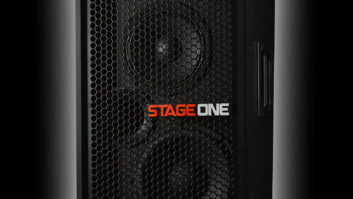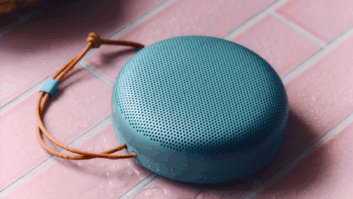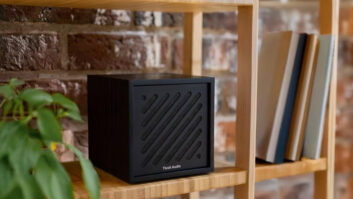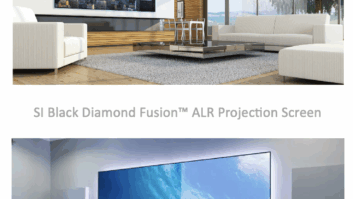Jamo is eliminating the deleterious effects of cabinet enclosures on speaker response by chucking the cabinet. The result is the three-way, dipolar open-baffle R 909.
Unlike other cabinetless dipolar speakers, the $15,000-per-pair R 909 uses cone drivers rather than electrostatic or magnestatic drivers, which are “known for their inability to play deep bass with true authority,” a white paper said.
The R 909 consists of two 15-inch cone woofers, a 5.5-inch cone midrange and a 1-inch dome tweeter mounted in a 1.7-inch-thick, seven-layer lacquered baffle. Naked baskets hang out the back.
In theory, the company contends, the ideal speaker shouldn’t have a cabinet at all. Cabinets resonate at certain frequencies and they create internal standing waves, coloring the sound. The air inside cabinets also limits driver movement, acting as a spring that “actually holds back the driver unit when it starts to move,” in turn limiting “dynamics, attack and precision,” including transient response.
Cabinets also create placement problems in a room. “It’s extremely difficult to find a position that minimizes the influence of reflections and room modes,” the whitepaper said. With a dipolar speaker, however, “the room’s influence on the resulting sound is substantially less when using dipolar speakers,” the company said.
Because sound is distributed from the front and rear of the speaker in opposite phase, “there is virtually no sideways sound transmission, and so the critical first-order [side-wall] reflections are practically eliminated.”
The sound transmitted from the rear of the speaker, Jamo added, doesn’t destroy the imaging and soundstage if the dipolar speaker is placed a minimum of three feet from the rear wall and angled in slightly. The reflected sound [second-order reflections] will thus be delayed in arriving to the listener, and the human ear will use the first received sound to determine the direction of sound.
Jamo’s design also counters the “acoustical short circuiting” that reduces bass response in dipolar designs below 200Hz. When a cone pushes forward, Jamo said, sound pressure levels are “phased out” because pressure created in front of the cone is counteracted by under-pressure behind the cone. The effect is most pronounced below 200Hz.
To overcome this effect, Jamo used cone drivers “with enough physical cone area and excursion to be able to move the amount of air needed to shift in order to compensate for the acoustical short-circuiting.” In addition, Jamo used high-sensitivity woofers (>100dB at 200Hz) in which the lowest frequencies are not filtered at all, letting the woofers reach down to 25Hz “with unmatched precision and attack,” Jamo said.
It will be available in red, yellow and black finishes.












